While starting an online shop, we have two main options. One is WooCommerce, and the other is Shopify. Are you confused between these? In this Shopify vs WooCommerce comparison, we will share everything you need to know about these platforms!
As we have entered into 2020, many trends have risen, among which online shopping and having an eCommerce store is the number one trend of the new generation.
eCommerce stores are the most rising thing in today’s market.
Due to the ever-changing trends and emergence of new companies, the competition is increasing significantly. Therefore, if you are thinking about owning an online eCommerce store, you just need to look for an online platform, which best suits your eCommerce business.
It doesn’t matter what your niche market is, the task of choosing the best eCommerce platform for your business can be a daunting task.
A good eCommerce platform saves you a lot of money.
It provides you with some of the best SEO friendly features which not only improves your customer relationship and customer service but also gives you affordable solutions for developing your business in a specified budget.
Among the most popular and promising eCommerce platforms, the most famous ones are Shopify and Woocommerce.
Shopify vs WooCommerce: What Are The Fundamental Differences?
The main comparison among both platforms is their primary difference in which one is a SaaS-based eCommerce platform (Shopify), and the other is an Open-source eCommerce platform (WooCommerce).
Well, let’s get to know more about each platform and their pros and cons.
Shopify (SaaS-based eCommerce Platform)

Shopify is a SaaS eCommerce platform, which is famous for its swiftness and simplicity of management and incorporating eCommerce stores. They are also termed as ready-made eCommerce solutions, which are utilizing cloud as their hosted service.
It is effortless and easier for the business holders, to just sign-up and set their online store, directly in a few hours, by using a graphical interface.
Advantages of Using Shopify
- As in the case of SaaS-based cloud service, you do not need to tackle technical details of the website; therefore, there is no need for owning a technical or professional team, having any kind of coding language along with no web hosting.
- This solution is best for entrepreneurs who do not want to deal with the complexity of website development but are focused solely on business development.
- You can focus on sales while SaaS retailers will handle all technical issues such as platform customization, security updates, payment processing, web hosting, and much more.
- You will have sufficient time to focus on analytics and improving your conversion rate.
However, depending on the functionality you want to use, you must pay monthly or annual recurring costs, which can become more prominent and hefty within few years.
The recurring fees include the costs of using the platform, as well as other various fees, such as transaction fees, hosting costs, certificate costs (SSL), and commissions per sale.
Disadvantages of using Shopify
- You have quite limited or very little control over your website and company.
- You can only utilize the available and existing themes and options for customization.
- Total dependence on suppliers for technical issues and customizations.
- As the online platform is a closed web source, therefore you are not provided with any source code.
- You may not have access to all SEO features like WordPress offers for WooCommerce.
Etc.
WooCommerce (Open-source eCommerce Platform)
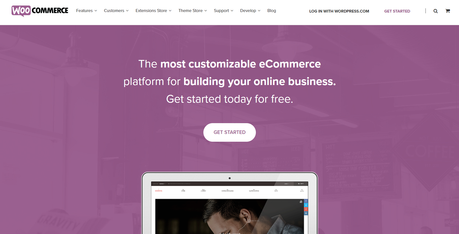
They are different from the SaaS-based platform as they usually provide open-source code access to their online store builders.
The business holders or online store owners are provided with a source code, which they can install on any available web-host or web-hosting service and set up their online store in just a matter of few hours.
Advantages of Using WooCommerce
- To take complete control of your website and company.
- For avoiding unnecessary and recurring hefty charges which are present in SaaS-based solutions.
- For more customizability and scalability of your website.
You can view open-source eCommerce platforms as a modular approach to developing great products. They work by giving you control over what you want in your online store. You can personalize your store and then select each function you want to add as a module.
For example, a specific platform can be pre-installed with a particular gateway of payment. However, if you do not want to do this or are considering using a different payment gateway, you only need to install a module for it.
Disadvantages of using WooCommerce
- When you are having access to the source code, you will require some significant technical skills or technical team to manage the platform and technical aspects.
- The free, open-source platform has limited functionality, but you must purchase additional modules.
- You are responsible for finding a good web host for your eCommerce store, to ensure that your store has a good site speed.
- Site management and UI management are generally more complex than SaaS-based solutions.
What Should You Look For In an eCommerce Platform?
There are certainly a few things to keep in mind when starting in an online store. The key factors that will help you determine which platform is best for your needs.
Cost: Shopify vs WooCommerce

Prices are often the most critical consideration for eCommerce website owners. You should review access costs, taking into account the variable cost of extra services and software.
Shopify
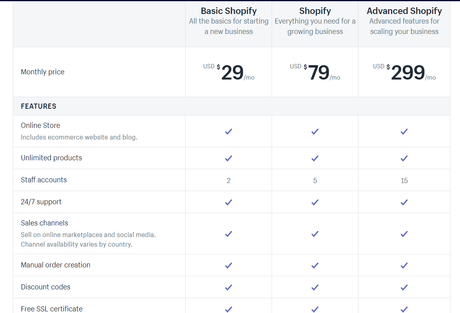
- With Shopify, you can easily create an online store. Their basic plan starts at $ 29 per month, and you can upgrade to Shopify’s plan for $ 79 or Shopify’s advanced plan for $ 299 per month. These plans include domain names, SSL certificates, and web hosting.
- The basic plan contains enough functionality to build a new online store. You can add unlimited products, two user accounts, unlimited file storage, and more.
- However, this price does not include the third-party tools and add-ons required to take the Shopify store to the next level. As your business grows, these costs will begin to rise, and you will quickly pay more than the basic plan.
WooCommerce
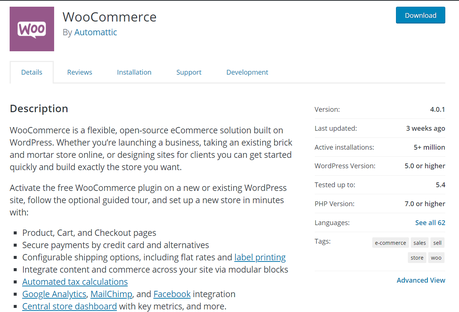
- The actual cost of using WooCommerce – WooCommerce is an eCommerce plugin for WordPress.org (also known as self-hosted WordPress).
- It is open-source and available for free as a WordPress plugin. However, you need a domain name, SSL certificate, and a WordPress hosting account to start the WooCommerce Store. Fortunately, various hosting companies now offer specialized WooCommerce hosting plans, which significantly reduces costs. For example. Bluehost, Cloudways, etc
- You can also control costs by purchasing tools and plugins only as needed. With the number of free themes and free add-ons available for WooCommerce, the prize is a winner.
Ease of Use: Shopify vs WooCommerce

Most users who open online stores are not web designers or developers. Even users who are familiar with basic concepts need an easy-to-use and unobtrusive platform.
Shopify

- Shopify is a fully managed platform, which means you don’t have to install, maintain, or update any software. You also don’t have to worry about security issues, performance, backups, and compatibility.
- Once registered, this will help you to choose a design for your website. It will help you with the arrangement and then help you add the product. Shopify has an intuitive drag and drop interface.
- For most users, there are many extensions and themes available on Shopify to choose from, enough to start and grow your online store.
WooCommerce

- WooCommerce is not a hosting platform like Shopify. It means that you must install WooCommerce, manage updates, maintain backups, and secure your website.
- There are many free and paid plugins to automate most tasks for you. WooCommerce is very flexible in terms of customization. You have full control over the entire platform. You can add any imaginable feature to your website with over 55,000 WordPress plugins.
- However, there is no built-in drag and drop design function. You can use one of the WordPress page builders like Beaver Builder, but it increases your costs.
Dropshipping: Shopify vs WooCommerce
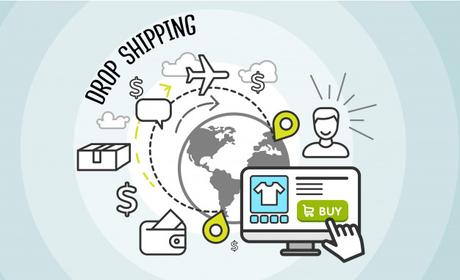
Dropshipping is an online store where eCommerce stores do not maintain an inventory of products. Instead, the order is completed by purchasing the product from a supplier and then sending it directly to the customer.
Shopify
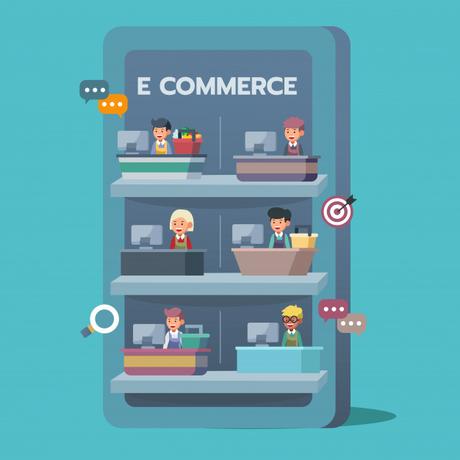
- When setting up a direct sale, the front of your website looks like any online store. Your users can browse products, add them to their shopping cart, and make payments just like any other eCommerce store.
- Then, depending on the supplier you choose, you must release the user’s shipping order. Shopify also offers integrated applications for a variety of popular direct sales markets (e.g., AliExpress, Oberlo, Print, etc.).
WooCommerce

- WooCommerce is a popular choice for direct sales companies, mainly because of WooCommerce, you can install extensions that make breeze execution orders.
- You can easily find extensions that allow you to import products directly, place orders on your website, and more. You can also create your eCommerce marketplace so other suppliers can sell on your site.
Scalability and Growth: Shopify vs WooCommerce

You’ve probably heard the word “growing sick” from various CEOs.
As your business grows, you need more resources to meet new challenges and goals. Both Shopify and WooCommerce can be scaled to handle a lot of traffic and orders, but they are different.
Shopify

- Shopify provides the technical side of the store, which means you don’t have to worry about performance, security, and scalability. When your business starts to grow, all you have to do is upgrade your Shopify subscription.
- Their infrastructure can quickly handle your growing business without having to worry about downtime, backups, updates, or security. They also offer business services as part of the Shopify Plus program. It eliminates the painful side of growth but also increases the costs of your business.
- Your costs will increase, so you should plan accordingly. The good thing is that you don’t have to hire/manage technical teams to offset your costs.
WooCommerce

- WooCommerce is a self-hosted platform that allows you to maintain website updates, backups, and security. As the store starts generating more traffic, your onboard WooCommerce hosting plan is devoid of any resources.
- The good thing is that since you have complete control over your website, there are many options to manage growth. Start with better resource management in caching, upgrading hosting plans to more powerful servers.
- Your hosting costs for WooCommerce will increase, but you have more control over your resources and will make sure you’re not paying for the resources you don’t need.
Support Options: Shopify vs WooCommerce

Both WooCommerce and Shopify are very easy to use. However, sometimes you need help to learn how to make something new in the store.
Shopify

- Shopify is a fully hosted platform, which means they can control the software, and they know their platform. Shopify offers 24/7 support through live chat, phone, e-mail, and Twitter.
- For users who want to solve their problems, Shopify offers extensive documentation, manuals, knowledge bases, video tutorials, and forums.
WooCommerce
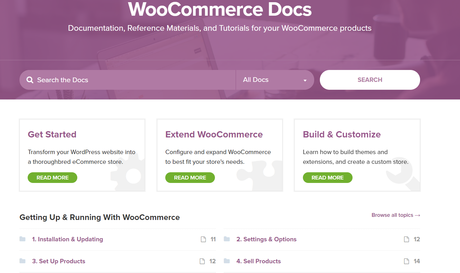
- WooCommerce is the most popular eCommerce platform worldwide, which means you have access to a vast number of support options when you need them.
- There are many documents, tutorials, and manuals on the official website to provide support to you. They also have a support forum where you can get help from other WooCommerce users and experts.
- Because it’s so popular, it’s easy to find a developer to help you solve WooCommerce stores, and it’s usually cheaper. You can find developers on freelance websites to solve WooCommerce problems.
Conclusion
While concluding the comparison, it can be described that Shopify and WooCommerce are both powerful platforms for launching eCommerce stores. It depends on your skills and preferences.
Shopify is easy to use. You don’t need to install anything so that you can get started quickly. Setting up payments is more comfortable, and their rate plans more natural to understand.
The disadvantage of Shopify is that you do not have complete control over everything. Transaction fees, add-ons, and integrations will increase your expenses. Upgrading options are limited to some subscriptions, and you can’t manage pay-as-you-grow costs.
WooCommerce is an open-source and gives you complete control over your website. The costs for opening an online store on WooCommerce with WooCommerce hosting companies are lower.
The disadvantage is that you have to maintain the software. It has some learning curves. However, millions of beginners are already using it, and they are quickly entering the learning phase.
If you are looking for a cost-effective solution and you want complete control over your online store, WooCommerce is your best platform. If you want a full recall of the product with unlimited scalability, Shopify is your better platform!
Note: Alexa Bliss contributes to this article on Shopify vs WooCommerce. If you an interesting article to add, then check our guest blogging guidelines.
We hope you found this article interesting and enjoyed the read. If you did, please consider sharing this article with your friends and fellow bloggers on social media. If you have already launched an online shop and looking for promotion, check our marketing archive.
There, we will be sharing useful information for website promotion.
Frequently Asked Questions on Shopify or WooCommerce
Here are some common questions asked on this topic.
Which is Better – Shopify or WooCommerce?
If you are looking for a cost-effective solution and you want complete control over your online store, WooCommerce is your best platform. If you want a full recall of the product with unlimited scalability, Shopify is your better platform!
Any Coding Required For Managing a WooCommerce Store?
Absolutely no.
When you need to design a custom theme or make changes to the core, you need to use codes. On the other hand, everything can be managed from the WooCommerce dashboard and using different plugins.
Can We Host a WooCommerce Shop Without Web Hosting?
No. For Shopify, it is possible. They will help you to host your domain name in their server, set up the shop. But here, you need to sign up for a web hosting plan.
Is Domain Required?
Probably. That’s how users are going to find your store.
Are Extensions / Add-ons Available?
WooCommerce have hundreds of extensions on their official website. The core team makes some of them, and third-party developers create some.
Money-Back Guarantee Available?
You can test Shopify for 90 days. On the other hand, WooCommerce is free. Their premium extensions come with 30-days money-back guarantee.
Which Is Best For Dropshipping?
Well, both platforms are best for the purpose. The platform won’t affect your dropshipping efforts.
Which Offers Best Support?
Both platforms got their support team. And they will help you the level best.
Why Not EDD (Easy Digital Downloads)
As you know, the EDD plugin is only for selling digital products. By using WooCommerce and Shopify, we will be able to sell physical products too.
Is WooCommerce Free For The Lifetime?
The answer is yes. The core WooCommerce plugin is 100% free. But for the add-ons, you might want to spend extra money.
